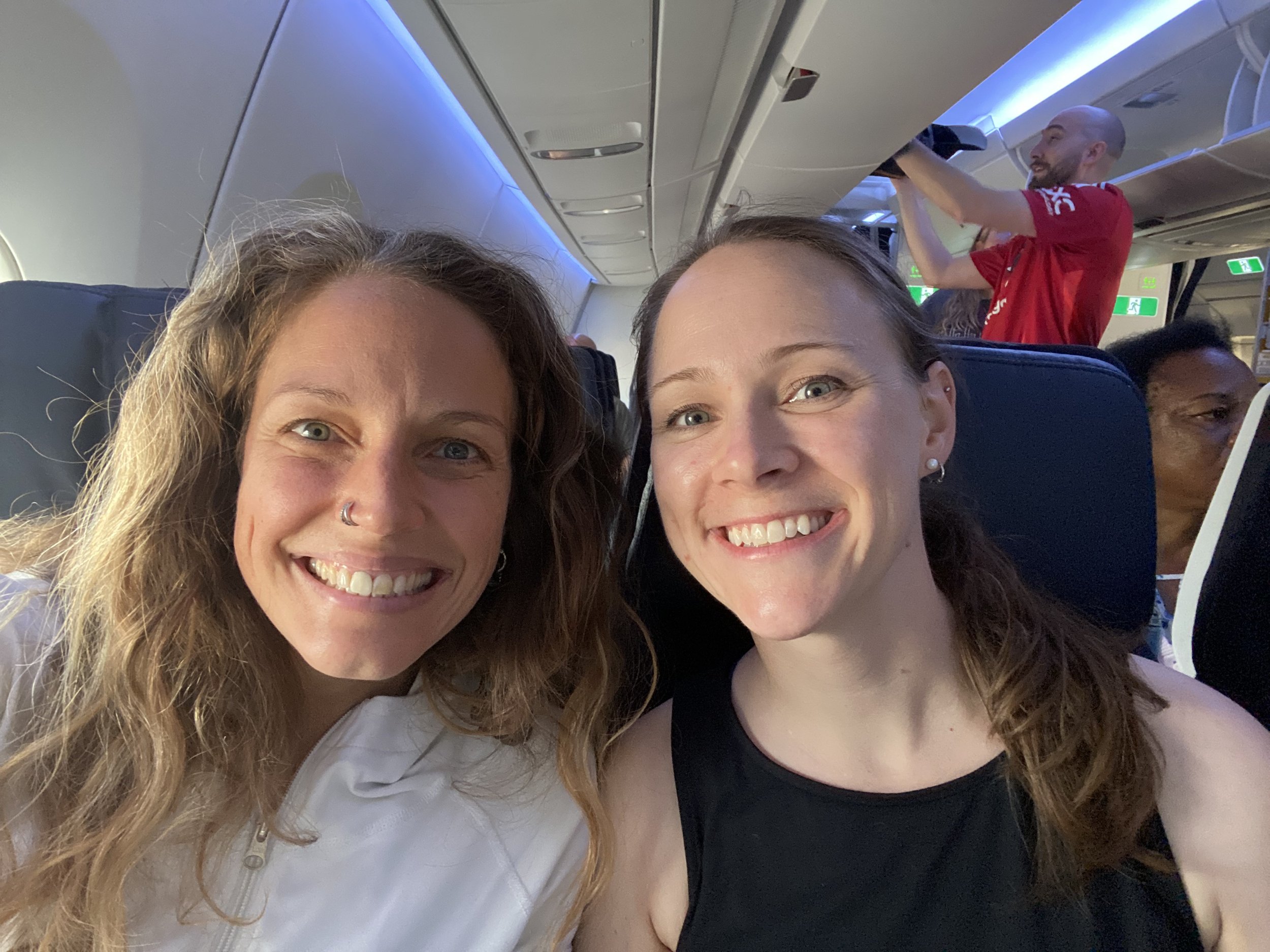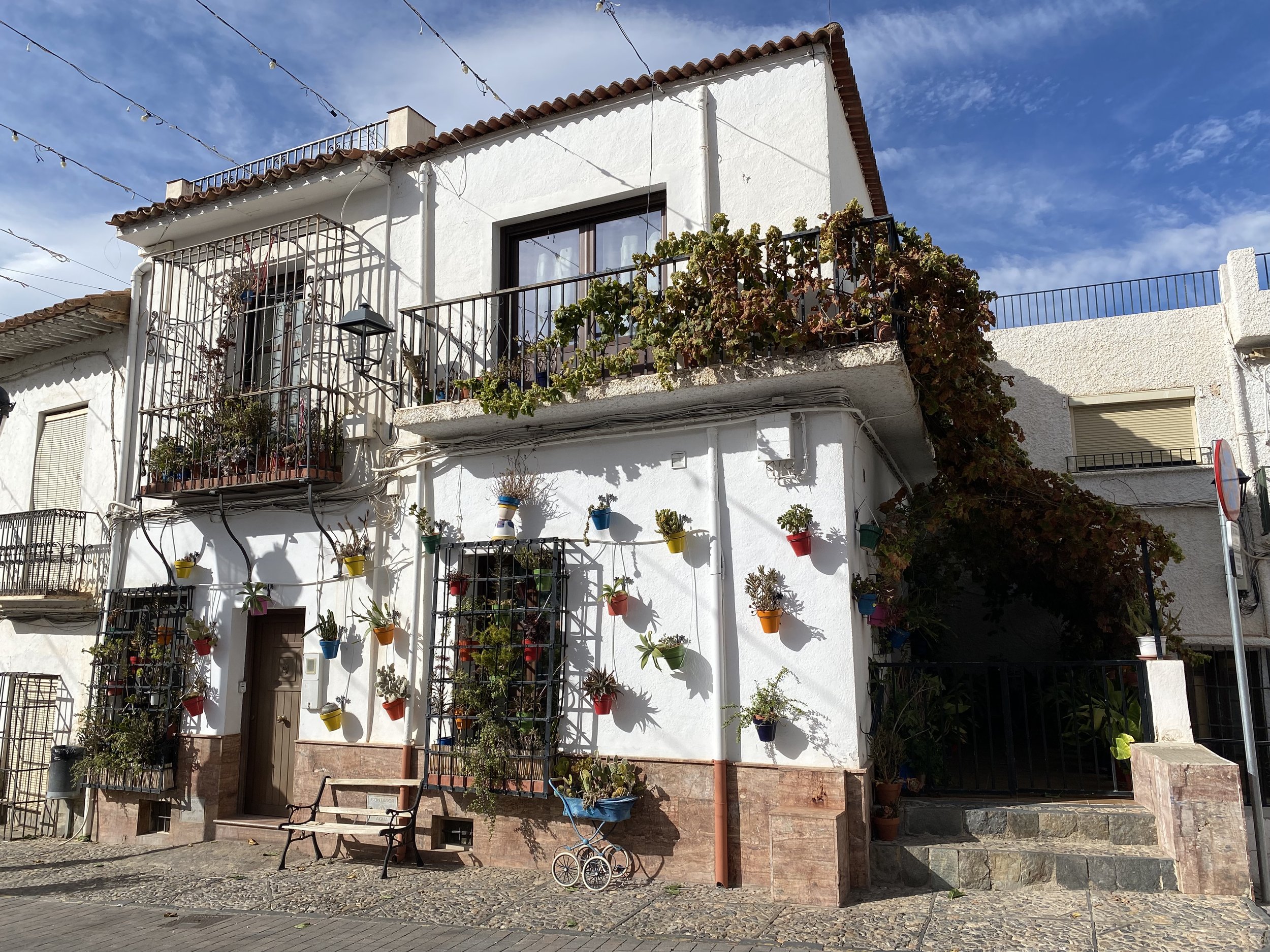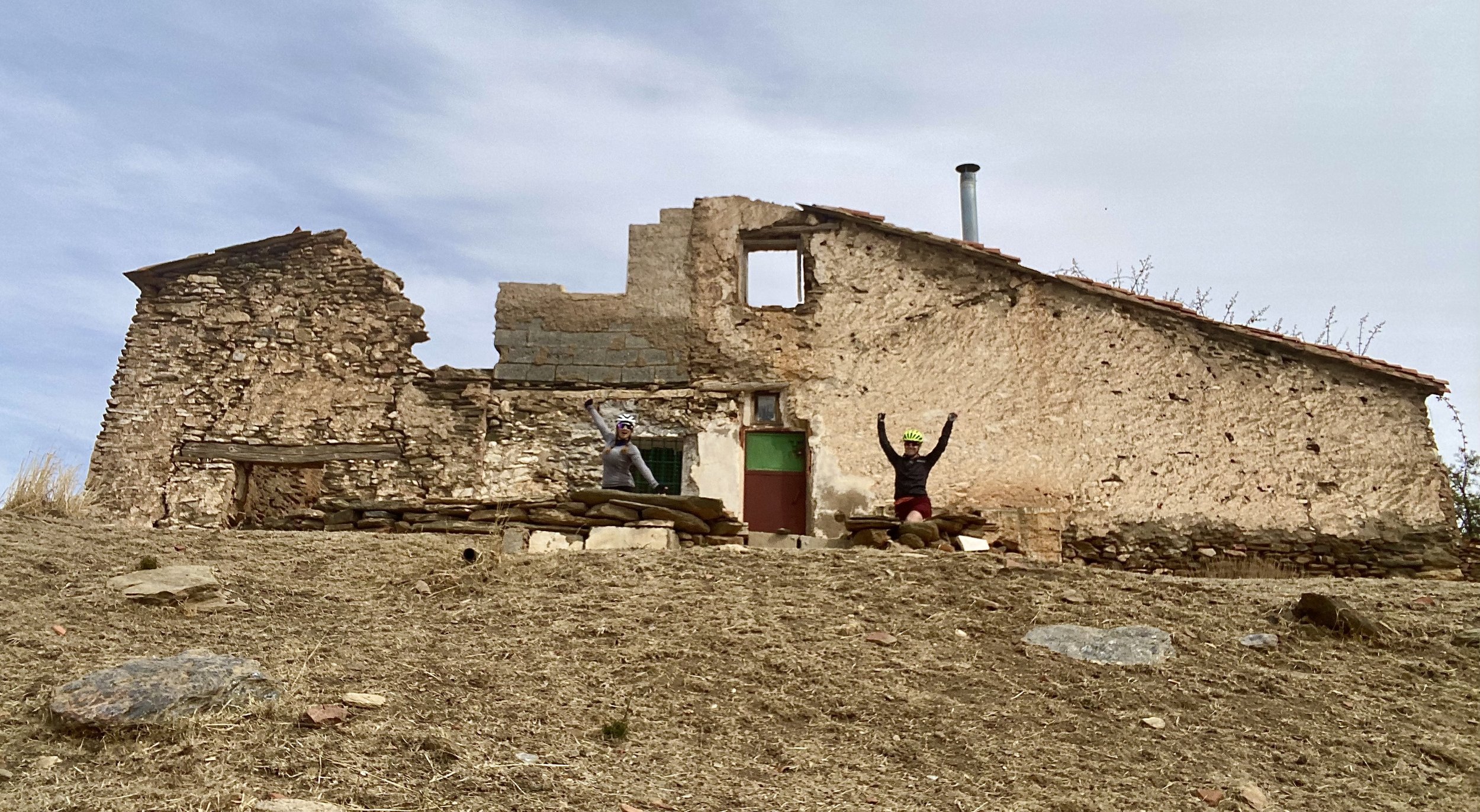Travel Day: Bikepacking the South of Spain 2024
June 25th, 2024, I broke my leg and had it surgically repaired with a plate and seven screws. It was the result of a mountain bike crash. I rode a bad line down a rock, went over the handlebars, and my bike fell on my leg, fracturing my ankle in two places. This was the second of two crashes this season. The first was a high speed gravel bike crash where I lost control on some loose gravel going 67km/h and ended up in the ditch. This caused a pretty bad concussion and three broken ribs. I was happy to be alive. The many hours I spent recovering this season allowed me some time and space to think. The result was a backroad bikepacking trip to Europe for my 40th birthday!!! I pitched it to Jocelyne, my friend and riding partner. For seven days we would be traveling by bike through the deserts in the south of Spain, hauling our gear more than 600km and 1.5X the elevation of Mount Everest, mostly on unpaved surfaces. Neither of us speak the language, or had done anything quite like this before. For some reason Jocelyne thought this was a great idea :)
The inspiration for the trip was The Badlands, an annual ultra distance bikepacking race in the province of Andalucia, Spain.
The Badlands route varies a little, but always starts in Granada, typically ending in Capileira, the town we stayed on our last night, but not where we ended our journey. We needed to circle back to Granada, so after some consultations with past Badlands participants, we settled on this route…
On our final day, we rode up and over the Sierra Nevada Mountain Range, climbing 2000m in just 32km to the summit of mount Pico de Veleta, ending with a final descent of 3000m back into Granada.
This is the story of our epic journey.
Travel Day
I left the house at 2pm in a panic.
For some reason I decided to weigh my bike box with all its contents just prior to walking out the door for the airport. It had been a hectic week leading up to the trip with last minute bike tweaks and logistical changes, so I didn’t get my bike torn down and fully packed away until the morning of our flight. Though I wasn’t concerned because I was confident it would be under the Air France weight restrictions. My bike is only 20lbs, and we were allowed up to 50lbs. In my mind there was no plausible way the bike box was going to be overweight, but there it was. The illuminated scale numbers silently mocking me awkwardly standing on the scale while balancing my bike box and trying to read the screen. I triple checked my math. 61lbs. Merde. We had not planned for an additional checked bag to carry the heavier gear and tools. Panicked, I grabbed an extra piece of luggage and formulated a plan for how we were going to juggle all these bags en route. Luckily with some creative luggage shuffling at the check-in counter we were able to send the extra bag home with our men (turns out my cheaply-made home scale is a tad pessimistic). Our first problem solved. Unbeknownst to us, this level of frantic troubleshooting would become a string weaving the most memorable moments of our trip together. But for the time being it was all smiles and excitement. We were boarded and ready to depart on our grandiose adventure. Wheels up!
The first leg of our journey was a red-eye trip from Ottawa to Paris. Poor Jocelyne can’t sleep on planes. She lacks the Fahlman superpower that is the ability to sleep anywhere, including sitting upright in a tiny chair. Earplugs and a Buff pulled down over my eyes and it’s lights out.
For some reason the flight attendant felt the need to wake me for breakfast, and I was super annoyed. “This flight needs to be longer,” I said groggily to Jocelyne who was now on her third movie. “I’m not done sleeping.” Somehow she actually agreed with me, that, yes, it would be nice to have a longer flight so I could get more sleep, which is precisely why I nicknamed her Care Bear. She emanates kindness to her own detriment.
We landed in Paris with a tight connection to make our flight to Madrid. I booked these tickets not realizing this involved clearing both security AND customs as well as transferring terminals. With a quick prayer to the travel gods we broke into a full-out airport sprint. Covering enough distance to cross the entire country of France on foot, we reached our gate at Terminal 2F just as our flight was boarding. We did one thing right. We had the good sense to AirTag our bike boxes before we left home. Miraculously, they also completed the odyssey from one aircraft to the next, and we could rest easy knowing that at the very least everything was going to arrive in Madrid.
Tips From First Time Bikepackers: Always leave more than two hours for airport transfers.
Actually this tip came from our coach, Andrew L’Esperance, who made this point as I was relaying stories to him after the fact. The real tip from us? When in doubt, ask your massively experienced professional cyclist and off-road machine of a coach, who at times, seems to spend as many hours wheels up as down.
Terminal 2E and 2F sound pretty close together. They are not.
Once safely in Madrid, we had our first experience with the “no comprendo” language barrier, but we were able to locate our bike boxes with the AirTags (once again, AirTags for the win). At this point we were feeing pretty smug. We nailed the air travel part of our journey, maybe not super smooth, but we at least had all the things. Next task was to grab a taxi to the Madrid train station. However, this proved more challenging than the internet led us to believe. I know what you are thinking. “What?! The internet led you astray?!!!” Yes it did. Each taxi driver in succession took one look at our bike boxes and left. No matter how large their stupid van was, they refused to even try our two bike boxes as cargo. We were left standing there feeling dejected, while hundreds of airport taxis drove off. OK, new plan. UberXL, prepaid. That way the driver would be forced to try and figure it out. We finagled the bike boxes in the ginormous Uber and were off to the train station.
We had a long, four-hour wait in the train station, but passed the time with a couple of coffees and our first of nine cured ham and cheese sandwiches that we would consume in the eight days of our trip. The layover almost killed a poor, sleep-deprived Care Bear, but she managed to remain both upright and conscious.
Once we finally boarded the train, the conductor informed us we would have to move our bike boxes, they were in the way. So we walked them from our seats in coach, through the progressively more extravagant business class cars, finally ending at the executive suite where our bike boxes would be spending the journey. “Can we stay here and travel with our bikes?” “No you can not.” That message got through. Enjoy the service bike boxes, I’m going to have a nap in coach.
I woke up as we entered the province of Andalusia. As we neared our arrival in Granada, the terrain became more mountainous and arid. Our windows filled with rolling hills, farms of olive trees, and quintessentially Spanish towns of whitewashed homes. Care Bear had bought us a snack of olives, chips, and coffee (I know, it’s an unusual and potentially horrible combo, but the olives were really good and the coffee much appreciated).
Granada was the last stronghold of the Moor culture in Spain, and was lost to the Christians in 1492. (Moors are muslim inhabitants primarily of Berber and Arab descent with cultural and religious ties to Islam). At the time of their defeat, the Moors were only allowed to stay if they converted to Christianity. Anyone who wished to maintain their allegiance to Islam was driven out. Despite this, Granada maintains some cultural influences from its Moorish heritage, especially seen in the architecture. Neighbourhoods with narrow streets and iconic white houses remain as originally constructed in their Islamic traditions. We saw a lot of these towns on our week-long journey.
Our basecamp hotel was perfect. Hotel La Garapa is, as advertised, a bike-friendly place. Not only did it have a room to rebuild our bikes including tools and a floor pump, they were willing to store our bike boxes for the week, so we were happy to bookend our trip by staying at this place. A bonus homemade breakfast, excellent coffee, chilly outdoor pool, and west-facing room with a terrace to watch the sunset made this the perfect first night.
We assembled our bikes without incident, then set out to find dinner and a grocery store. Tomorrow we start our ride and we will be very remote, not encountering a town or store for almost 70km, so we needed to stock up on the food required for 5-6 hours of riding. Here’s what we settled on. Coach L’Espy approved.
Fuel of champions.
We went out for dinner at 8pm, feeling as though we were exemplifying the cultural vibes with a customary late Spanish dinner. However, we were the first customers to arrive by far, even beating the oldest couple of the evening who were easily in their late 70’s. This was also the moment we realized how many tomatoes I would be consuming during the trip. Care Bear has a pretty bad sensitivity to tomatoes, a staple in Spanish cuisine. Luckily I love tomatoes, and the Spanish do them well. This was the first meal of many that I would finish the tomatoes left on Care Bear’s plate, often consuming more than two large tomatoes in a single meal, like some form of a Spanish Cookie Monster.
We finished the night back at the hotel packing our panniers, and finally heading to bed at midnight - 18 hours after leaving home at 2pm EST. It felt really good to be horizontal.
Tomorrow we start our week long journey in the Granada Geopark, which is comprised of 4,722 square kilometres of eroded, arid climate including badlands, fossils, river valleys, and stunning desolate landscapes. Back in the Miocene epochs, 5 million years ago, this area was actually covered by the ocean. Tectonic activity between the African and Euroasian plates formed the Baetic Mountain range, isolating this area from the ocean and creating a large, inland, saltwater lake. Overtime the lake drained back to the ocean, leaving a beautiful eroded lake floor of fossils, sedimentary layers, and mineral deposits exposed and prime for gravel biking. We couldn’t be more excited. For now it was time to get some sleep. Tomorrow was going to be a hard day. Details to come…
Until then, thanks for Reading!
Today’s Shout Out goes to :
Alex and Emily for lending us their bike boxes
Ross for lending us his AirTags
Jo-Anne for her homemade natural chamois butter adapted from this recipe.
Our intended route with the Granada Geopark marked. The ominous looking green space below that is the Sierra Nevada mountain range.
More Travel Blogs:

















The caves pictures above are some of the oldest human settlements in south-western Europe. They date back to the Neolithic Period, approximately eight thousand years ago. These cave sites, and their remnant artifacts have shed valuable inside on life during the prehistoric period in Spain. The caves are built into limestone cliffs, creating a natural shelter for humans and livestock. However, the arid climate, sparse rainfall, and persistent erosion cumulated into an inhospitable agricultural climate, and the economic consequences forced the settlers to move on decades ago. All that remain are the crumbling shells of what once was someone’s home. We saw them everywhere.